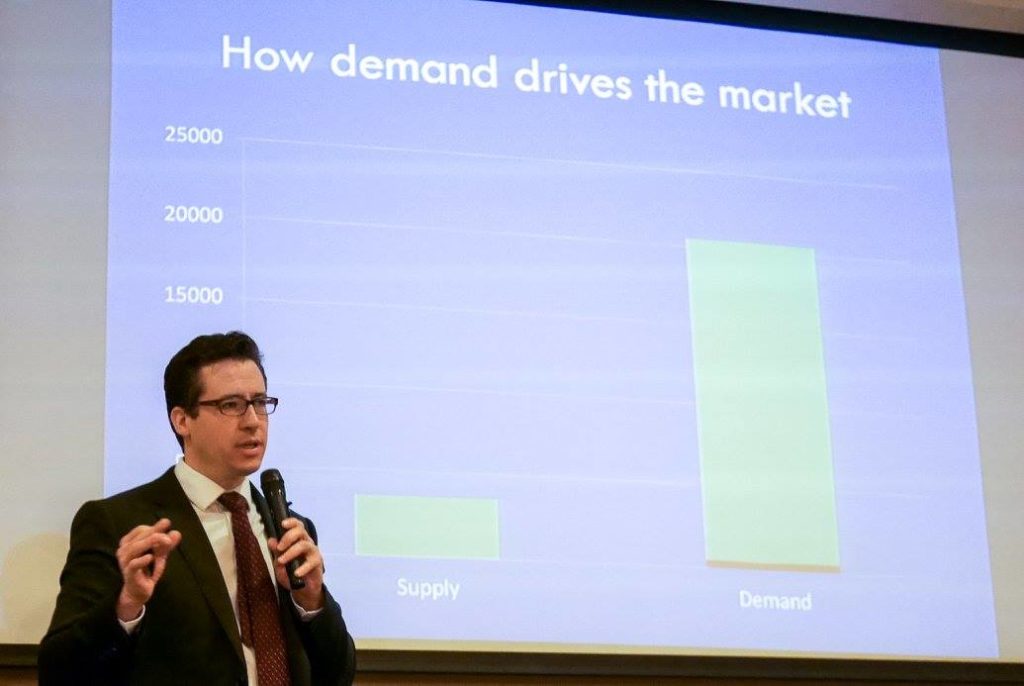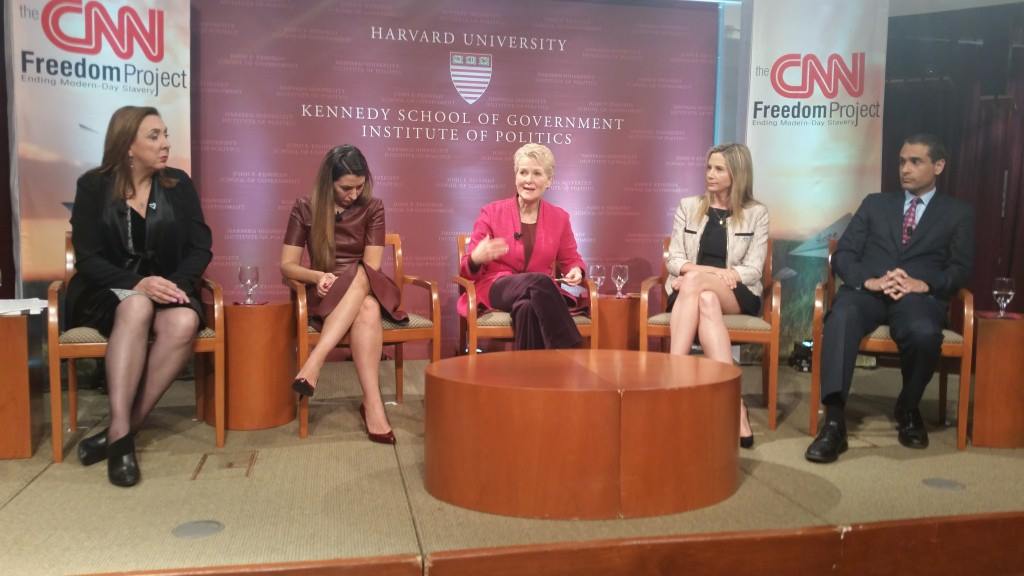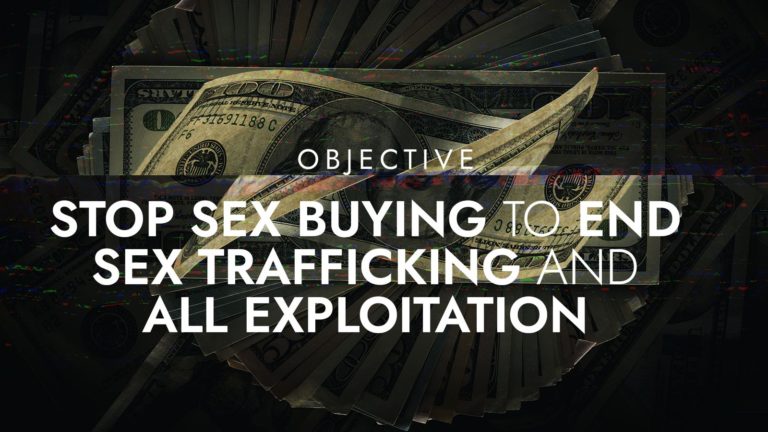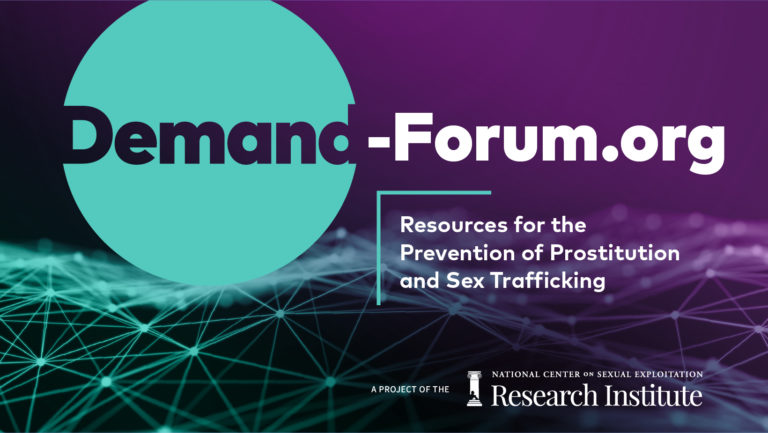Demand Abolition
Demand Abolition was established in 2008 by Ambassador Swanee Hunt through the Hunt Alternatives Fund to stop sex trafficking in the US by combatting the purchase of adults and children in prostitution. In 2020, the foundation decided to embed Demand Abolition in a like-minded organization with long-term sustainability. In 2022, the National Center on Sexual Exploitation absorbed the archives and active projects of “Demand Abolition.”
The name “Demand Abolition” is now used only in association with Ambassador Swanee Hunt and the project’s past work. Demand Abolition’s Founding Director, Lina Nealon, as well as former project collaborators now help to lead NCOSE’s work to end sexual abuse and exploitation.
CEASE Network
Legacy of Demand Abolition: Innovation & Solutions through the CEASE Network
Among its most notable work, Demand Abolition is known for conceptualizing and supporting the CEASE (Cities Empowered Against Sexual Exploitation) Network Initiative, launched in 2014 as a collaboration of pioneering cities committed to reducing sex This action-oriented network was dedicated to innovating, testing, and sharing strategies with a proven impact on deterring people from buying sex in many major metropolitan areas, including Atlanta, Boston, Chicago (Cook County, IL), Dallas (North Texas), Denver, Houston, Oakland (Alameda County, CA), Phoenix, Portland (Multnomah County, OR), San Diego, and Seattle (King County, WA). The CEASE Network initiative has shown that change is possible when innovative, evidence-based, and survivor-centric tactics are employed to confront the heart of prostitution and sex trafficking—the sex buyers.
The learning from these cities created a blueprint for reducing consumer-level demand for prostitution at the local level, while fueling a national movement to end sexual exploitation in the United States. In 2023, NCOSE will publish a report regarding the lessons and strategies learned from these pioneering 11 cities to aid more communities in the effort to shrink the demand for paid sex.


The CEASE Network was conceptualized by and received support from Demand Abolition, a program of Hunt Alternatives meant to combat the demand for illegal commercial sex as a way to eliminate the harms of the illegal sex trade in the United States. With help from key partners, Demand Abolition provided funding for CEASE Network coordinators, and provided operational support for their teams such as training and technical assistance, data collection and analysis, and access to network-wide communication and learning platforms. Strategy development, intervention implementation, and fundraising to sustain local interventions were driven by the core team.
Sex buying is an inherently harmful activity that sustains a global marketplace of sexual exploitation and that puts countless people and communities at risk. Sex buying is a crucial—but often overlooked—component of any comprehensive approach to ending the illegal sex trade. To put it simply: No buyers, no business.
The demand for paid sex is a complex, multi-layered issue, requiring an equally multi-dimensional response. CEASE Network teams were led by local coordinators with strong ties to their community, and a proven ability to bring together stakeholders to achieve a common goal. Sectors represented on each team included:
- survivors of the illegal sex industry
- local law enforcement
- government officials
- business leaders
- academicians
- technology experts
- public health professionals
- philanthropists
- other committed stakeholders, among them people in existing coalitions working to reduce the harm of the illegal sex trade
Each team employed a localized strategy with tactics designed to achieve the reduction goal. Together these teams formed a learning community and utilized their spheres of influence to share successes and challenges, spurring increased innovation and accelerating impact.
As the network expanded, successful methods were replicated in other communities, fueling a national demand-reduction movement.
Demand reduction techniques used by CEASE Network teams are data-driven and have been measured regularly to track progress. Innovation and experimentation aren’t just encouraged, they are expected. Those fighting sexual exploitation must be as agile and creative as the exploiters: the sex buyers and pimps who are utilizing technology and taking their illegal activities online.
"Who Buys Sex?" Report
Legacy of Demand Abolition: Groundbreaking Research, “Who Buys Sex?”
Much of the research on prostitution and sex trafficking in the US focuses on the “supply” side of the market: prostituted and sex trafficked persons, the great majority of whom are women and girls. While it’s critically important to understand supply-side realities and effective approaches to victim services, the other half of the market—the “demand” side, defined almost entirely by the actions of men—has been woefully understudied by comparison.
As part of its efforts to identify policy solutions for reducing demand for illegal commercial sex, Demand Abolition commissioned a survey of over 8,000 U.S. men to understand who buys sex, why they do so, and what might reduce their behavior. The results not only describe the nature of the sex trade in a unique way, but also the “accelerants” and “decelerants” of sex-buying. The data show how—and to what extent—various normalizing forces contribute to sex-buying behavior. Conversely, the data show how smarter law enforcement strategies as well as behavioral interventions can effectively and efficiently reduce demand. This groundbreaking report was released in 2018.
Most men have never paid for sex. In fact, only 6.2% of respondents have bought sex within the past 12 months.
“High-frequency” buyers purchase so often that their actions account for a disproportionately large share of the illegal sex trade. About 25% of active buyers report purchasing weekly or monthly, and their activity accounts for nearly 75% of market transactions.
High-frequency buyers are more likely to have started at a young age and with the help or encouragement of others in their social networks. These people are far more likely than others to have had their first paid sex experience initiated by “a friend, colleague, group of friends, or family member,” typically by the time they turned 21.
Demographic traits are poor predictors of sex buying. Race and sexual orientation have almost no profiling power.
Currently active high-frequency buyers are much more likely than other men to make $100,000 or more annually. Buyers are found across the income distribution with this important exception.
One in five men who have never bought before “could envision buying sex in the future if the circumstances were right.” The report delves deeper into what these circumstances are, and how they reinforce the experiences and beliefs associated with sex-buying behavior.
On average, US sex buyers spend more than $100 per transaction. A very small number of survey respondents reported spending thousands of dollars on their most recent “transaction.” Based on the recorded spend data and computed annual transactions for different groups of buyers (excluding, for statistical purposes, the aforementioned extreme spenders), this survey estimates the annual size of the US commercial sex market at $5.7 billion.
Buyers visit a range of venues and use a similarly diverse number of information channels to purchase sex. Prominent methods include visiting “massage” brothels—known to law enforcement as Illicit Massage Businesses (IMBs), arranging “dates” online, visiting “adult establishments,” and going to well-known “tracks” for street prostitution. No single location dominates, though high-frequency buyers list IMBs as a frequented venue.
Certain ideologies distinguish sex buyers from other men; they share many attitudes and beliefs about sex and relationships. Active ones are more tolerant of cheating on a significant other and differ markedly from non-buyers on measures of impulse control.
Active buyers are more likely to say that prostitution is a “mostly victimless” crime and are less likely to say that prostitution is a crime “where someone is harmed.” They are also more likely to say that prostituted persons “enjoy the act of prostitution” and “choose it as a profession.”
Buyers and non-buyers hold strikingly different views on masculinity and sex buying. Non-buyers are much more likely than active ones to say that purchasing someone for sex involves treating females as objects, and that those actions exploit others. Active buyers are very likely to say they are “just guys being guys” or “taking care of their needs.”
Many men who have bought sex in the past wish to stop. About one-third of active buyers “strongly agree” that they do not want to do it again, a sentiment shared by most former buyers.
Active buyers value their personal safety, sexual health, and freedom from arrest above most other priorities. They are generally unconcerned about breaking the law but preoccupied by the need to avoid getting caught. Active and former buyers are much more likely than non-buyers to say police “should not arrest anyone” involved in prostitution. The strongest bloc of male support for legalizing the US sex trade comes from buyers themselves.
Only about 6% of men who purchase sex illegally report ever having been arrested for it. When buyers do perceive that risk, it can lead them to alter their activities. High-frequency buyers are more sensitive than low-frequency buyers to police presence and are more likely to react by shifting to a different location and diminishing their behavior. About one-quarter of buyers “strongly agree” that “the risk of arrest is so high I might stop.”
Perceiving a risk of arrest has a diminishing effect on sex buying. Two factors increase this perception: (1) a buyer’s own arrest history, and (2) the extent to which he shifts his purchasing activities in response to police presence.
The main driver of sex buying, “normalized beliefs” about the commercial sex trade, combines interrelated ideas: prostituted women enjoy the act, it is mostly a victimless crime, buyers are merely taking care of their needs, and they are just “guys being guys.”
- Policing and prosecution: Move law enforcement’s finite resources away from arresting and adjudicating prostituted persons and towards arresting and adjudicating buyers.
- Public funding: Make available short-term federal funding programs to support state and local agencies ready to instigate reforms.
- Principled penalties: Use mandatory minimum fines from convicted buyers to offset the costs of survivor exit services and law enforcement operations to stop demand.
- Fair consequences: Create increasingly severe penalty structures for repeat buyers, ensuring that sanctions are fair and consistent with survivor testimony of the nature of victim impact.
- Upstream messaging: Counter messages that normalize sex buying through educational and public health interventions.
- Employer impact: Establish employer policies prohibiting sex buying under any circumstances, and suspicion of sex-buying activity on company time or with company resources.
- Public health: Implement targeted prevention campaigns and focus deterrence communications on behavioral “nudges.”
See more on page 32 of the report (Part IV, Policy Recommendations).
Ambassador Swanee Hunt
Legacy of Demand Abolition: Ambassador Swanee Hunt’s Vision of a Better World
“Well… someone’s gotta do it…” That was Ambassador Swanee Hunt’s response when her close friend, a prominent female Republican politician, learned of Swanee’s newest initiative to combat the demand for paid sex.
Swanee then turned to me (with a twinkle in her piercing blue eyes) and stage-whispered “I love it when people tell me something can’t be done!”
 This moment in the hallway perfectly captures Swanee Hunt. A woman from whom, the only types of goals worth pursuing are audacious, seemingly impossible ones—challenges that very few people dare to dream could be achieved. She has relentlessly pursued multiple human rights and social justice causes with a spirit of innovation, inspiration, and invitation. Swanee is known among international and national policymakers and activists for addressing systemic problems at the root cause and has been an early adopter and key catalyst for emerging movements, new approaches, nascent fields of study.
This moment in the hallway perfectly captures Swanee Hunt. A woman from whom, the only types of goals worth pursuing are audacious, seemingly impossible ones—challenges that very few people dare to dream could be achieved. She has relentlessly pursued multiple human rights and social justice causes with a spirit of innovation, inspiration, and invitation. Swanee is known among international and national policymakers and activists for addressing systemic problems at the root cause and has been an early adopter and key catalyst for emerging movements, new approaches, nascent fields of study.
As an heiress of one of the wealthiest families in the United States, Swanee could have led a life of leisure and luxury. Instead, she has taken on some of the worlds’ most seemingly intractable problems and advocated tirelessly for the most marginalized in society—using her privilege and power to open doors (or kick them if need be) and giving up her place at the metaphorical and literal “table” so those most affected could be part of decision-making.
The many articles and accounts that have been written about Swanee fail to capture the breathtaking extent of what she has accomplished in her life thus far: stemming homelessness and supporting single mothers in Colorado, hosting peace negotiations after the Balkan War while US ambassador to Austria under President Clinton, instituting the Women and Public Policy Program at Harvard, and creating a foundation with initiatives to prevent and stop war, dry up the commercial sex market, and ensure that woman—both Republican and Democrats—reached parity in US politics (the foundation’s tagline was “provoking change . . . for good”).
Perhaps one of Swanee’s most audacious missions—one we believe will be among her greatest legacies—is to eradicate sex trafficking and the commercial sex industry by targeting the root cause: demand for paid sex. Demand Abolition was the first national program to combat demand and to catalyze attention and action toward holding sex buyers accountable with police, policymakers, activists, and within the movement to end sexual exploitation.
Scanning the country, I determined that the National Center on Sexual Exploitation was the best home for the work to which I’ve devoted more than 8 million dollars and 12 years of endless hours. That’s because NCOSE has a focused board and promising financial future. The staff has informed passion, a deep bench, and excellent legal expertise to locate levers of transformative change.
Since 2021, I’ve become more certain each day that at NCOSE my vision is understood, our experience is tapped, and our eye-opening research is used to maximum effect. What more could a founder hope for?

Other Resources from Demand Abolition
Legacy of Demand Abolition: Helpful Resources
Demand Buyer Fact Sheet
Key Facts About Preventing Trafficking Victimization Through Demand Reduction
Arresting Demand: Disaggregating Prostitution Laws
Examples of Legislative Changes that could Reduce Sex Buying
Deconstructing Demand: The Driving Force of Trafficking
Article by Swanee Hunt
NCOSE Continues The Work of Demand Abolition
Demand Abolition's Legacy Lives On
Demand Abolition’s work to convene large gatherings bringing together experts and activists from across the world to learn from one another and other key players from diverse sectors and even other movements sparked new ideas, brought unity, and spurred more efforts to eradicate demand for paid sex. These face-to-face opportunities inspired many to deeply believe that together we could change policies and practices, transform culture, and create a society in which people don’t buy others for their own sexual pleasure.
Like many others touched by Demand Abolition’s work, the National Center on Sexual Exploitation has been deeply impacted. We recognize that the key solution to ending sex trafficking and all forms sexual exploitation is by reducing the consumer-level demand.
NCOSE’s tactics to curb demand for paid sex build on the findings and lessons on what works from the 12 CEASE Cities initiatives.
Learn more about about the important of combating demand here. .




